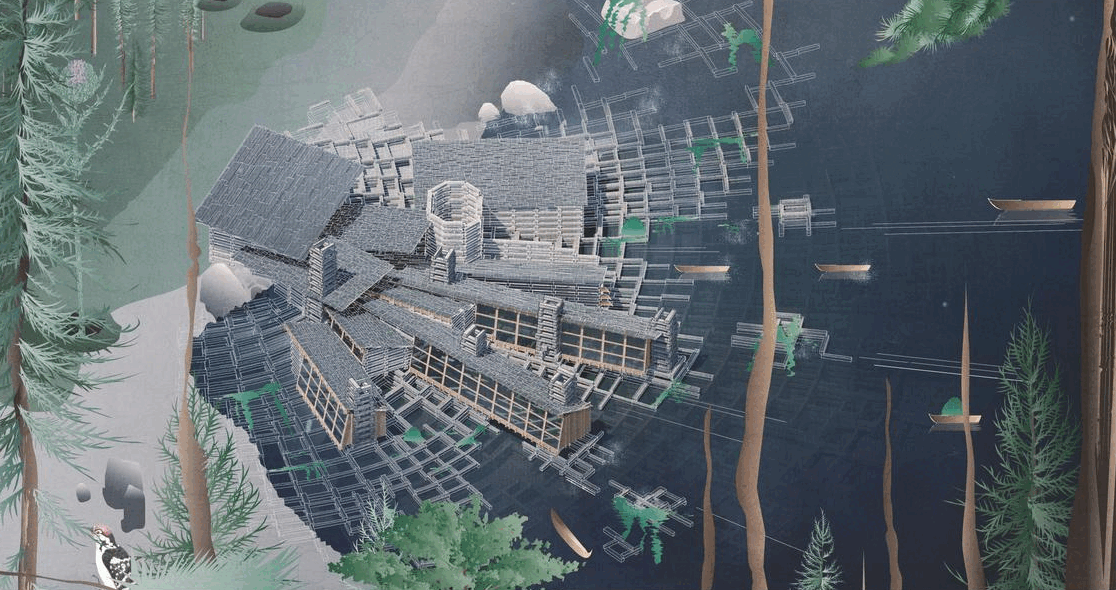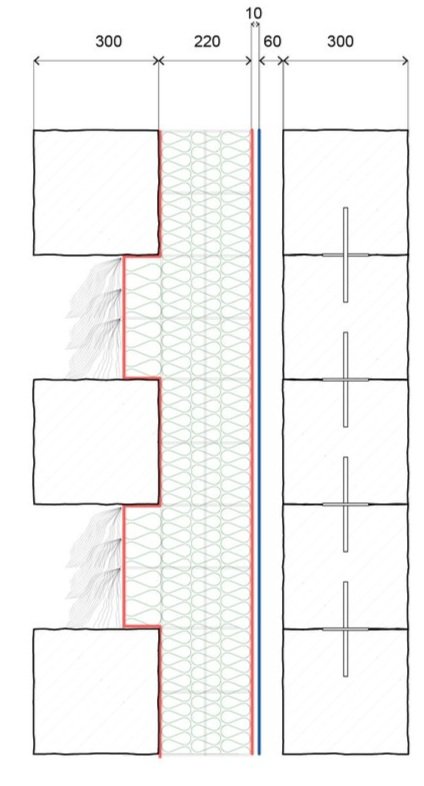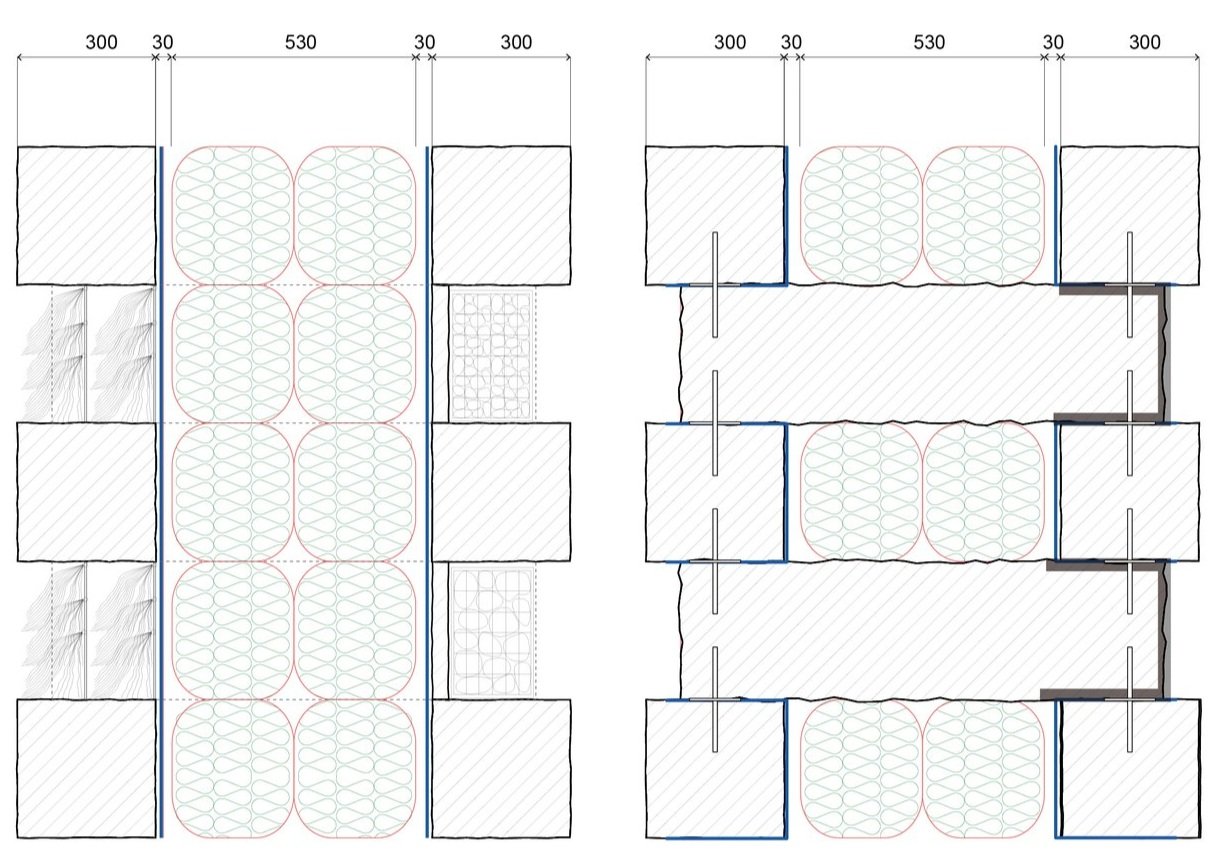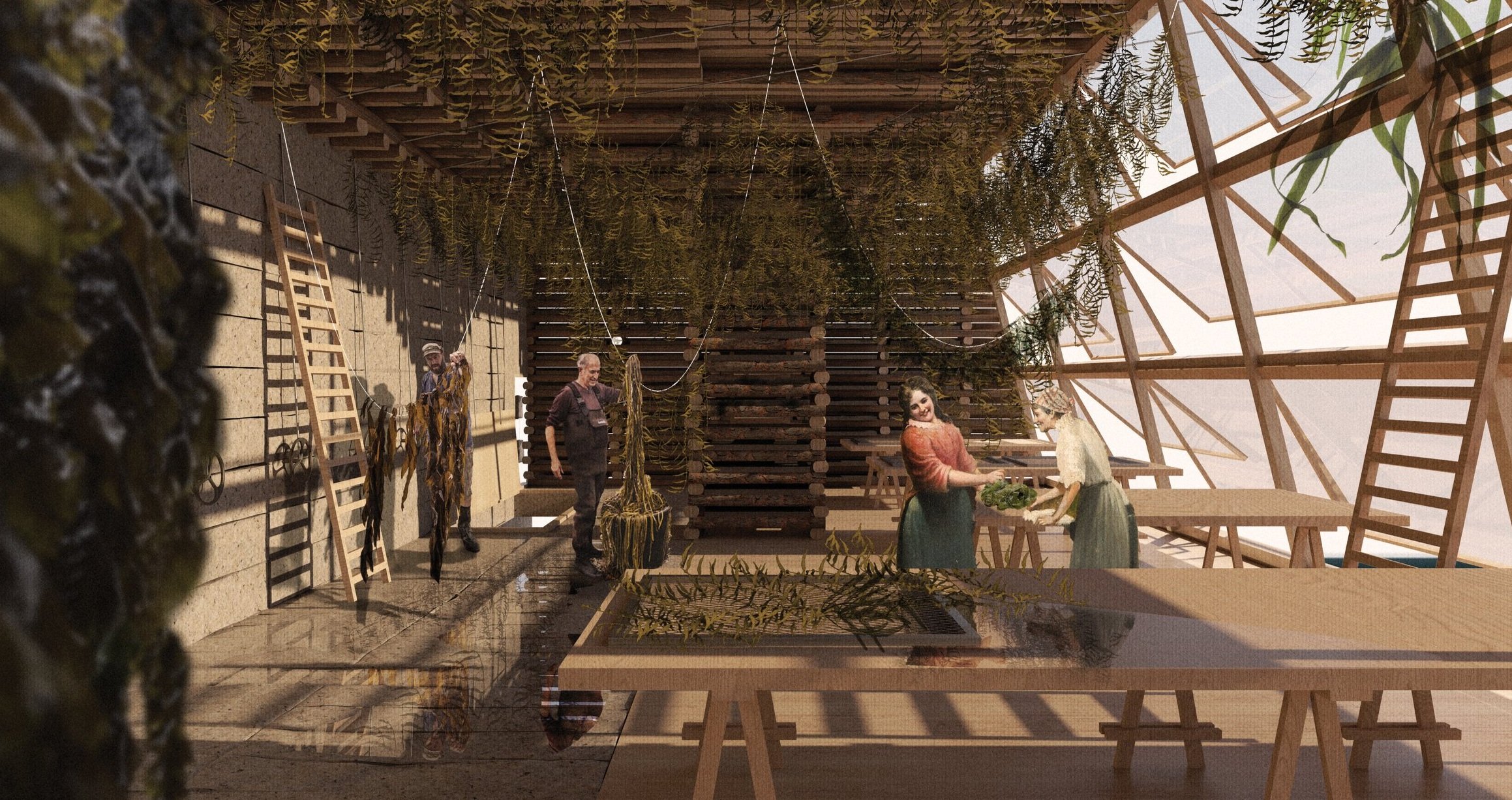
The Politics of Stacking
On the coast of Maine’s Mount Desert island, home of Acadia National park, and sacred land of the Wabanaki people, an architecture has been proposed that questions ownership and permanence through an architecture of stacking. This architecture of transience, encouraged by the responsibility of building on indigenous lands, is achieved by stacking locally sourced materials. Large stones, timber logs, and tons of seaweeds are gathered and stacked to form a seaweed gathering and processing plant - an architecture that will visit rather than eternally impose itself on the land.
A Seaweed Harvesting and processing plant on the coast of Maine
MIT Core III
Teaching Team: Sheila Kennedy, Cristina Parreño, Rami el Samahy
Group Work: Latifa Alkhayat, Wilson Marshall, Tim Cousin, Natalie Pearl
Fall 2020
On the nearby Island of Stonington, Maine, the remains of an old quarry’s operations are scattered throughout the landscape. These stone scraps are reclaimed and deployed as a cribbed landscape. Acting in compression, the stones of this proposal will enable cantilevers and increase the surface area of the coast by 4x. The stones are foundation and aquatic infrastructure to support the culture of seaweed on rocks. They act as an inter-tidal garden slowing wave action while also allowing nutrient rich water to flush through the site.
Where stone isn’t appropriate, the constructive system continues in timber, both materials merging into a hybrid form. The larger spanning roofs use small diameter hemlock logs from the ecological thinning of neighboring forests. From the stone foundation to the slate roof carried by the spanning of timber brackets filled with seaweed insulation, cribbing is used across materials as a versatile constructive strategy that can create programmatic spaces with non-standard elements and in a reversible way. The drying spaces, contained in the timber spanning aisles, constitute a large part of the seaweed plant program.
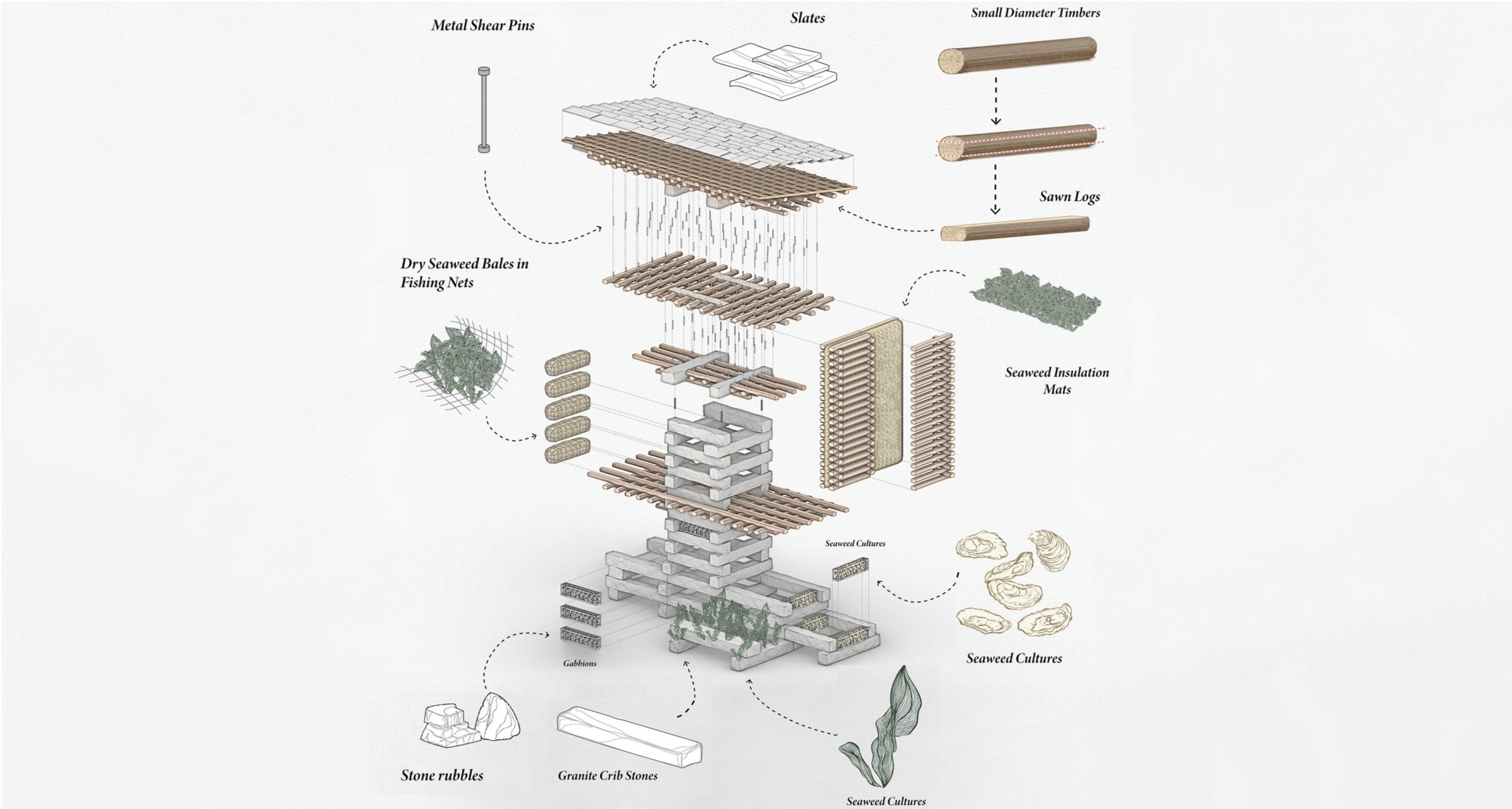
This site and architecture’s stewardship is dictated temporally, seasonally. The shared program of the seaweed facility allows for the integration and blending of communities within the transitional seasons. The program that spreads from the outcrop of Dorr Point to the sea, is not intended to designate spaces for these communities, but to make these communities spatial. Stone cascades down across the inter-tidal zone to where seaweed is cultivated on rocks. In this peculiar context, the “stack” is proposed as a strategy to achieve a liminal architecture visiting the land and acting as a repository of reclaimed natural building materials from the region.
To optimize the drying of seaweed, which requires heat, the drying spaces are oriented to the south to maximize solar gains, while the stone northern walls act as thermal mass. The material and their elemental deployment express different narratives through their assembly and eventual disassembly on Dorr Point. This primitive stack acts as an architectural repository for stone to be stored and eventually used in future architectural and agricultural application. When the facility closes, the stack can be dismantled, and its materials used elsewhere. Seaweed can be fertilizer, timber burnt, and stones re-arranged in new structures.
Drying Room Wall Type
Nursery Wall Type
Boat House Wall Type
The project poses itself as a pioneering infrastructure to promote seaweed cultivation and community engagement. Seaweed culture necessitates no freshwater or fertilizer, and seaweeds participate heavily in the planetary sequestration of CO2. At high tides, canoes circulate the plant. At low tide, the cribscape seaweed is revealed and can be picked while Oyster and Lobster cages, slotted into the stones, are rendered accessible for harvest. The architecture addresses the coast’s temporal nature, dancing with the tide and harnessing it programmatically in the farming and processing of aquaculture.
This is a case-study in radical up-cycling. Built as a “stack” of re-purposed stones, small logs, and seaweed insulation, the system’s embodied carbon is very low. Furthermore, the constructive system uses simple stacking assemblies that enable further re-purposing of building elements. With its up-cycled constructive system, its operation as an experimental community seaweed-plant. The “stack” is formulating a new way to consider the making of the built environment in relation to nature and material resources in the light of the environmental crisis.





